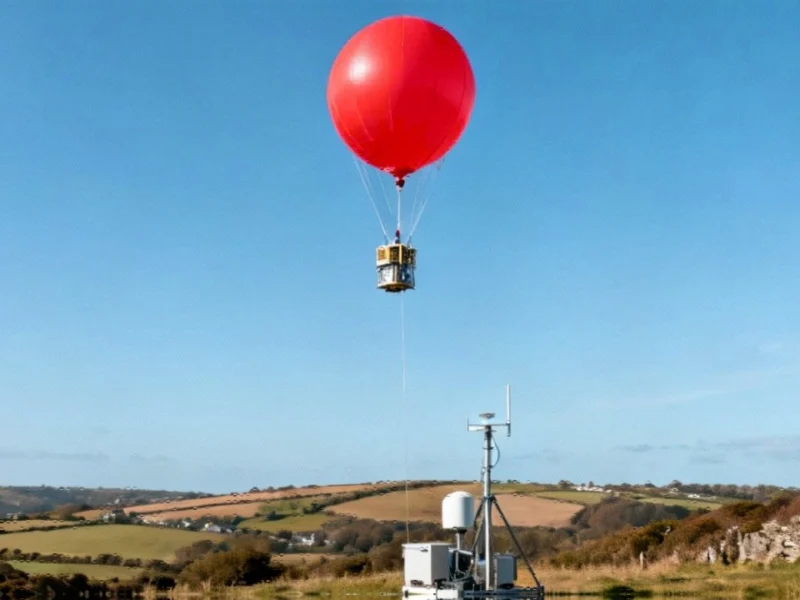Revolutionizing Space Weather Monitoring
The UK Met Office has initiated a groundbreaking atmospheric monitoring program using specialized weather balloons equipped with advanced radiation sensors. These sophisticated instruments are ascending to unprecedented altitudes exceeding 100,000 feet (30,480 meters) from strategic locations in Camborne, Cornwall and Lerwick, Shetland. This ambitious project represents a significant advancement in our understanding of atmospheric radiation dynamics and space weather phenomena.
Unlike traditional meteorological monitoring, this initiative focuses specifically on measuring radiation variations throughout different atmospheric layers. The data collected will provide crucial insights into how radiation levels transition from ground level to the upper atmosphere, filling critical knowledge gaps in space weather forecasting. As recent industry developments demonstrate, high-altitude monitoring technology is rapidly evolving to address complex environmental challenges.
Advanced Detection Technology
The radiation monitoring equipment deployed in this project was developed by the University of Surrey Space Centre, representing the culmination of decades of research and refinement. Professor Keith Ryden, director of the Surrey Space Centre, revealed that the technology builds upon systems originally developed for aircraft monitoring, with their first instrument flying on Concorde during the 1980s.
“We now have an even lighter system designed for rapid balloon launches,” Professor Ryden explained. “This advanced equipment reaches altitudes more than twice that of typical commercial aircraft levels, giving us a new way of tracking radiation levels through the atmosphere.” This technological evolution mirrors related innovations in sensor technology and monitoring systems across various industries.
Practical Applications and Industry Impact
The implications of this research extend far beyond academic interest. Krista Hammond, Met Office senior space weather manager, emphasized the practical importance: “Space weather monitoring is in its infancy compared to meteorology, so this project will provide a huge leap forward in terms of our understanding of how space weather events impact radiation levels through the Earth’s atmosphere.”
The collected data will benefit multiple sectors vulnerable to space weather effects, particularly aviation and energy infrastructure. Understanding atmospheric radiation patterns is crucial for aircraft routing, satellite operations, and power grid management. These market trends in infrastructure protection highlight the growing importance of comprehensive environmental monitoring systems.
International Collaboration and Data Integration
This project represents a collaborative effort across multiple organizations and national boundaries. A third monitoring station has been established in The Netherlands through partnership with Dutch national weather forecasters, creating a comprehensive European monitoring network. The data gathered will be cross-referenced with ground-based monitoring equipment installed earlier this year at the Camborne site.
The international scope of this initiative reflects broader industry developments in global environmental monitoring and data sharing. As with many recent technology initiatives, the success of this project depends on robust data integration and international cooperation.
Future Implications and Expansion Potential
The successful implementation of this balloon-based monitoring system opens new possibilities for atmospheric research and space weather prediction. The compact, lightweight design allows for frequent launches and rapid deployment, enabling researchers to capture data during specific space weather events and normal conditions for comprehensive comparison.
As the program evolves, the methodology could be adapted for global deployment, creating an extensive network of high-altitude radiation monitors. This expansion potential aligns with related innovations in global monitoring systems and environmental data collection. The project’s success may influence market trends in environmental monitoring technology and space weather infrastructure development.
This pioneering approach to space weather monitoring represents a significant step forward in our ability to understand and predict atmospheric phenomena that impact critical infrastructure and technological systems worldwide. The data collected through these high-altitude missions will contribute to safer air travel, more resilient energy grids, and enhanced satellite operations for years to come.
This article aggregates information from publicly available sources. All trademarks and copyrights belong to their respective owners.



